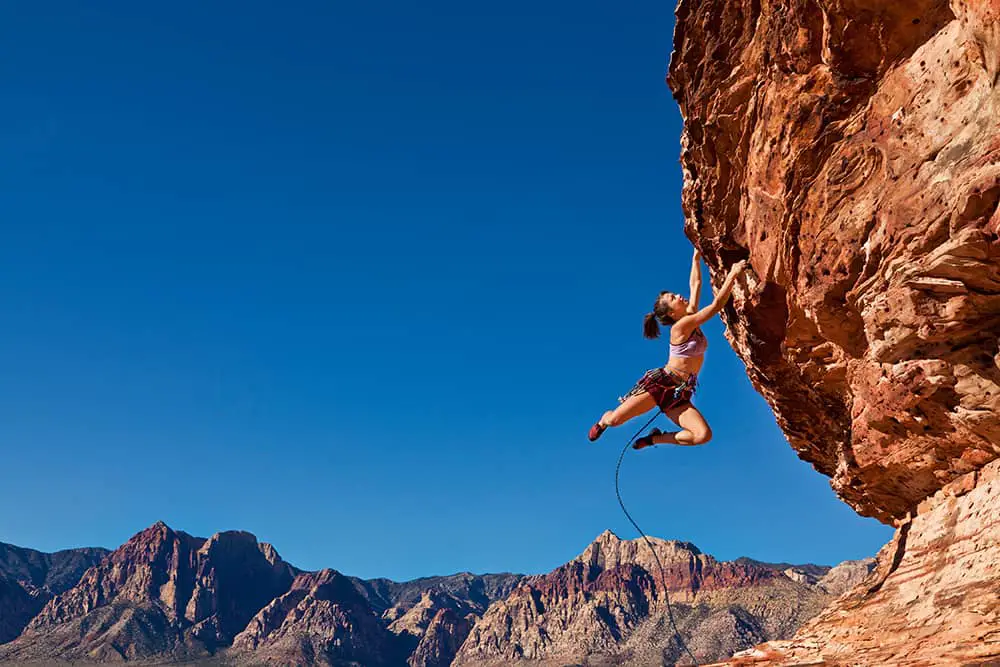Training For Adventure Sports – How To Pair It With Endurance Performance
Sports like mountain biking, rock climbing, kite surfing or diving are surging in popularity. Athletes who traditionally specialized in endurance events are increasingly crossing over and are actively training for adventure sports. The thrill of the experience with its dynamic and unpredictable nature is too exciting to resist.
In this post you’ll find tips to implement into your training to use that endurance fitness and adapt it for extreme and adventure sports.

How endurance training is crossing into adventure sports
Although the two disciplines were always close, historically they were still separate. Endurance training is synonymous with long, steady-state activities, primarily focusing on cardiovascular stamina for events like marathons or triathlons.
Adventure sports took this concept and added an element of unpredictability to it – be it terrain, nature or simply a ‘multi-disciplined approach’. The challenges of trail running, rock climbing, swimming, mountain biking – to name a few – added extra excitement for those who wanted to push their physical and mental limits to the very edge. And often beyond.
Read also: 12 Effective Strength Building Workouts For Any Experience Level
As more endurance athletes have tried themselves in adventure sports, training regimes evolved accordingly. Traditional long runs or swims were complemented with ‘hybrid training’ – high-intensity interval training, strength workouts, and mental conditioning.
However, while the lines between the two disciplines are blurry, the training for adventure sports will differ from pure endurance events.
Four pillars of training for adventure sports
The ultimate goal in both disciplines is to perform at your peak for as long as possible. In adventure sports, this is only part of the story.
Athletes need to take into account different physiological and psychological demands.

- Physiological adaptability: Adventure sports often require rapid transitions between high-intensity bursts and steady-state activities.
- Mental resilience: Athletes must cope with unexpected challenges, from changing weather to unfamiliar terrains.
- Diverse skill set: Unlike marathons that focus on consistent pacing, adventure sports demand varied skills, from climbing to navigating.
- Environmental acclimatization: Training must account for diverse climates and altitudes, from mountain peaks to underwater depths.
This – for obvious reasons – means that adventure sport athletes must take a holistic approach to training that primes their minds and bodies to cope with ever-changing disciplines and environments.

The Resilient Athlete
A Self-Coaching Guide to Next Level Performance in Sports & Life
Are you aiming to become a resilient athlete who is able to withstand any pressure? Be able to jump on any opportunity? Take any challenge life throws at you head on?
Then this book is for you.
Learn moreWhat athletes should focus on in their training
While traditional endurance training has its roots in consistency and repetition, adventure sports introduce a healthy dose of unpredictability. In particular:
- Consistency vs. adaptability: Traditional training emphasizes consistent pacing, while adventure sports require adaptability to ever-changing conditions. Aim to expose yourself to different demands on a frequent basis. Shock your system.
- Fixed routes vs. dynamic terrains: Traditional athletes train for known routes, whereas adventure athletes prepare for unknown challenges. Hit the trails, go for a hike, ride a mountain bike. Try to move in different ways.
- Solo vs. team dynamics: Adventure sports often involve team coordination, adding another layer to training. Find a community and train with its members frequently.
- Controlled vs. natural environments: While traditional training might occur in controlled settings, adventure sports often immerse athletes in nature. Get comfortable with being outdoors in different environments.
Making the transition from “Endurance to Adventure” means taking a broader and more versatile approach to training. Hybrid athlete training regimes already are already changing to accommodate the varying demands of modern athletes, ensuring they have the emotional resilience and physique for both endurance challenges and ‘unpredictable experiences’.
In particular, we can expect to see training regimens adapting to include more of:
- Holistic training: Athletes will adopt comprehensive training regimens, blending cardiovascular workouts with skill-based drills.
- Tech integration: Wearable tech and AI-driven training programs will personalize routines, optimizing performance.
- Eco-conscious adventures: Sustainable practices will shape adventure sports, promoting eco-friendly expeditions and training.

Safety and infrastructure in training for adventure sports
A good athlete is a well-rounded athlete. Which means opportunities for training for adventure sports are endless.
And even though adventure sports, by their very nature, involve elements of risk, safety of athletes must always be considered. In particular, even state-of-the-art gyms and other facilities should consider:
- Advanced access control: Modern training facilities incorporate a sophisticated gym door access system to ensure only authorized individuals enter, enhancing safety.
- Specialized equipment: Adventure sports training requires equipment tailored to mimic real-world challenges, from climbing walls to white-water simulators. This should be regularly checked.
- Emergency protocols: Given the high-risk nature of some activities, facilities prioritize emergency response measures, ensuring swift action during incidents.
Read also: Peak Performance Mindset – 21 Secrets How To Achieve More In Life
Training for adventure – a long-term journey
Adventure sports are about more than just pitting yourself and your wits against fellow athletes. It is about taking on nature itself in the greatest arena of all – the great outdoors.
As the landscapes of endurance and adventure converge, athletes are redefining their training approaches, ensuring they’re not only physically robust but also mentally agile. Embracing this holistic approach ensures they’re primed to face the unpredictable challenges nature presents.
Alexander Madison
Alex is a committed professional at Riliable.com, where he leverages his expertise to drive innovation and efficiency. With a passion for his industry, he continually applies his insights to improve strategies and solve complex problems. Outside of work, Alex enjoys staying active and can often be found exploring the outdoors or honing his skills in various sports. He combines his love for athletics with his profession and writes to inspire readers to embrace a healthy, active lifestyle.
Have an opinion? Share via links below and tag @theathleteblog
Tags In
GET A FREE TRAINING PLAN
Subscribe to my email list and get access to a free 4-week “back in shape” training plan
You’ll also get two full-body strength sessions and some other goodies!

How did I get here?
Hey there! My name is Andrejs and I am here to inspire, entertain and get you fit for any adventure.
I went from being an over trained pro athlete to an endurance coach sharing how to listen to your body and live life to the fullest.
Traveling, new sports & activities brought new meaning to my training and made it much more effective, fun and enjoyable. And I'm here to help you do the same.


